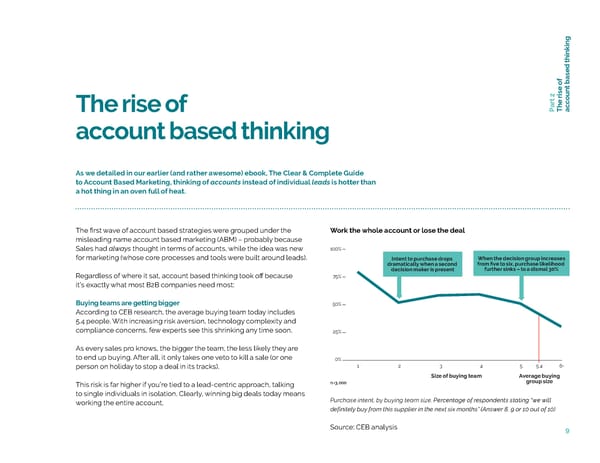f t based thinking oun art 2 c The rise of P The rise oac account based thinking As we detailed in our earlier (and rather awesome) ebook, The Clear & Complete Guide to Account Based Marketing, thinking of accounts instead of individual leads is hotter than a hot thing in an oven full of heat. The first wave of account based strategies were grouped under the Work the whole account or lose the deal misleading name account based marketing (ABM) – probably because Sales had always thought in terms of accounts, while the idea was new 100% for marketing (whose core processes and tools were built around leads). Intent to purchase drops When the decision group increases dramatically when a second from five to six, purchase likelihood decision maker is present further sinks – to a dismal 30% Regardless of where it sat, account based thinking took off because 75% it’s exactly what most B2B companies need most: Buying teams are getting bigger 50% According to CEB research, the average buying team today includes 5.4 people. With increasing risk aversion, technology complexity and compliance concerns, few experts see this shrinking any time soon. 25% As every sales pro knows, the bigger the team, the less likely they are to end up buying. After all, it only takes one veto to kill a sale (or one 0% person on holiday to stop a deal in its tracks). 1 2 3 4 5 5.4 6+ Size of buying team Average buying This risk is far higher if you’re tied to a lead-centric approach, talking n =3, 000 group size to single individuals in isolation. Clearly, winning big deals today means working the entire account. Purchase intent, by buying team size. Percentage of respondents stating “we will definitely buy from this supplier in the next six months” (Answer 8, 9 or 10 out of 10) Source: CEB analysis 9
 The Clear & Complete Guide to ABS Page 8 Page 10
The Clear & Complete Guide to ABS Page 8 Page 10